A driver’s license is a much sought-after symbol of individual freedom. Like all coveted things, it’s also liable to be faked. The procedure to get a license here isn’t nearly as stringent as those in developed countries, yet many drivers still resort to having counterfeit licenses, putting everyone at risk.
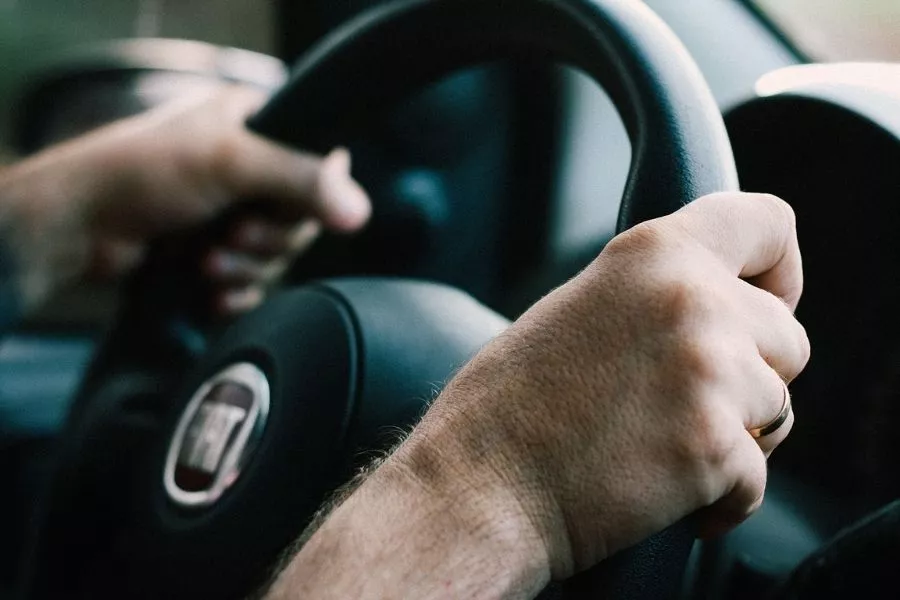
Driving remains a privilege that tends to be abused by some motorists
Philippine-based YouTube vlogger Gadget Addict has released a video on how to spot a fake driver’s license. He notes that imitation licenses manage to pass some of the basic authentication tests, making detection increasingly difficult. Nevertheless, he outlined the steps that authorities use to spot a forged license, leaving out several other details to keep traffic enforcers one step ahead of counterfeiters.
Light test
One of the ways to tell an authentic driver’s license from a fake one is by using a smartphone’s flashlight feature. Shining the flashlight through the back of the card yields a blue or purple hue on the card’s face, an indication that the license is legitimate.
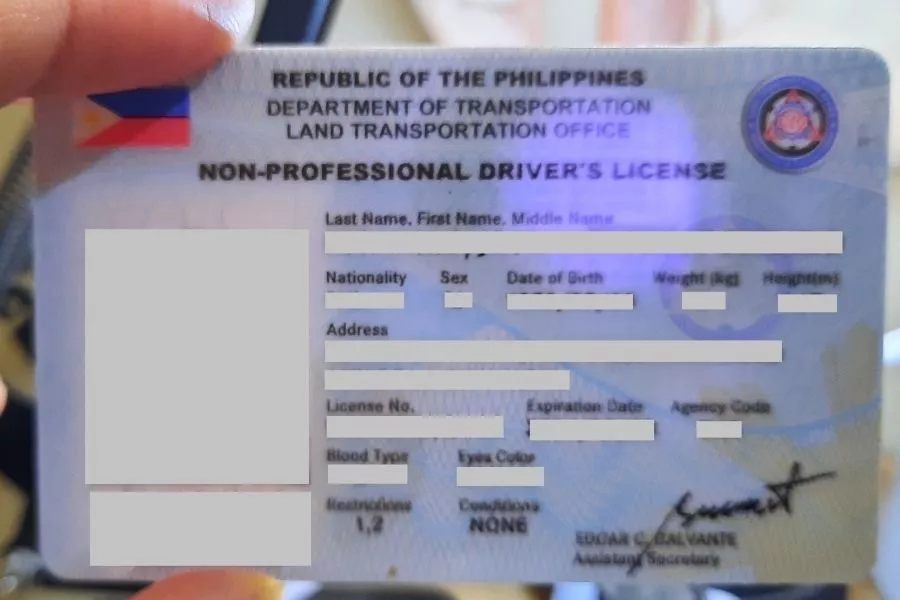
Real licenses are usually indicated by a purple hue on the front when a light is shone from the back
If the light is shone through a fake card, the resulting hue in front will be yellow or white. However, note that some forged licenses can also give out a purple hue.
Hologram test
As a security feature, official driver’s licenses come with two holograms on the face: one showing the image of an eagle that’s visible under UV light, and another showing the Land Transportation Office (LTO) logo surrounded by an intricate pattern, visible under normal light.
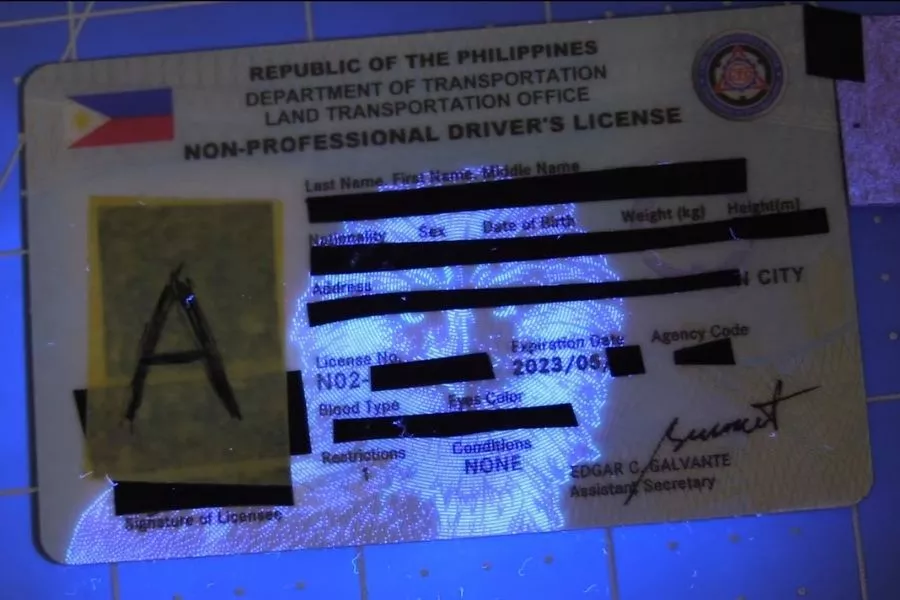
The eagle hologram should be visible under UV light
Cards that show only one or none of the images can be readily dismissed as fake. Then again, as mentioned, a number of falsified driver’s licenses also possess these features.
Print test
The expiry date on the front of an authentic license, as well as the Restrictions and Conditions portion at the back, are embossed on the card using a laser. This results in raised characters that can be clearly seen when magnified under normal light, as well as felt by rubbing a fingernail across the print.
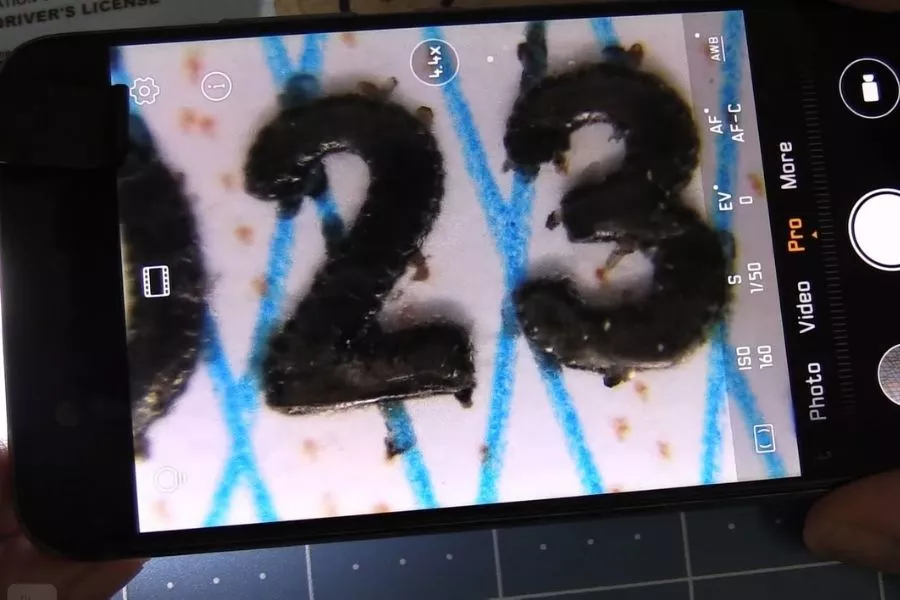
The expiry date should be embossed and clearly seen even under magnification
Replica licenses either have manual etchings that don’t correspond to the printed text or use a debossing process that depresses the engraving into the card, apart from appearing blotchy when viewed under magnification.
Security band
A prominent feature of authentic driver’s licenses is the security band running across the card’s back. This strip should be flush with the rest of the card, with no raised or sunken edges that can be felt when running a fingernail through it.
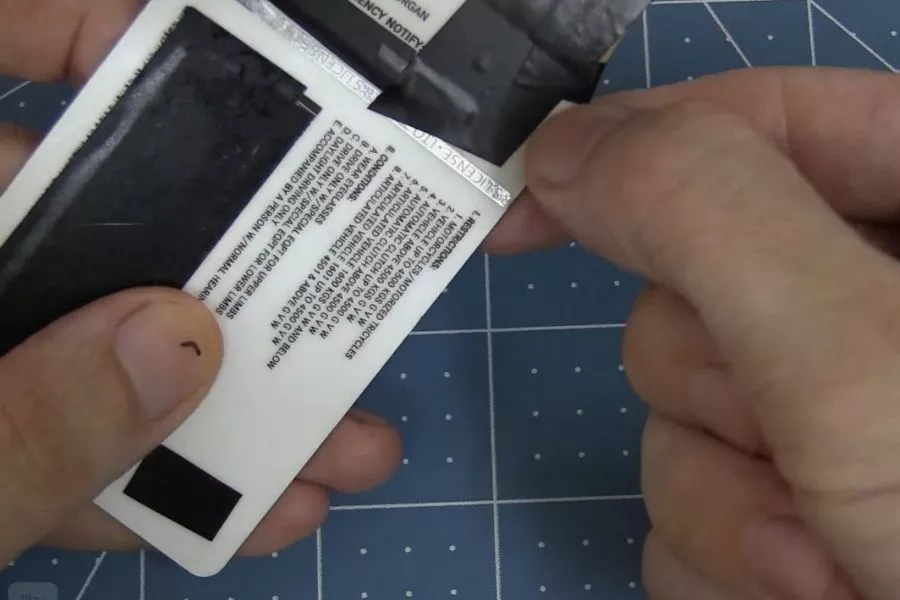
The security band should be flush with the rest of the card
There should also be no visible line on the equivalent portion of the card in front. Some replica licenses managed to make the strip flush at the back with no apparent line on the card’s face.
Scratch test
Find an area of the card with no marks or damage, then lightly scratch it with your fingernail (no knives or any other sharp-edged tool). On an authentic card’s polycarbonate surface, the fingernail should leave no visible indentation or mark.
Peel test
Driver's licenses are made from multiple layers that have been fused together and laminated into a single piece. If you take a corner of a legitimate card and try to peel it off with your finger, you won’t be able to take it apart.
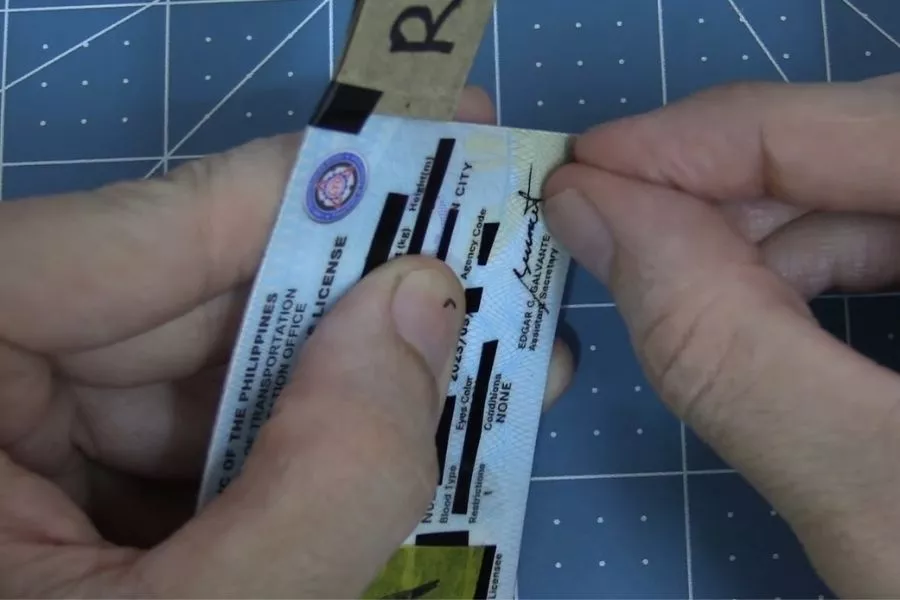
Authentic licenses are made from fused polycarbonate layers that cannot be peeled off
On a forged card, the layers are more obvious and more easily picked off at the corners.
The LTO portal
If you’re not inclined to do all these tests, there’s an easier way to authenticate a driver’s license. Simply log on to the LTO’s Land Transportation Management System (LTMS) online. The website will ask for the license number, expiry date, and the official receipt number.
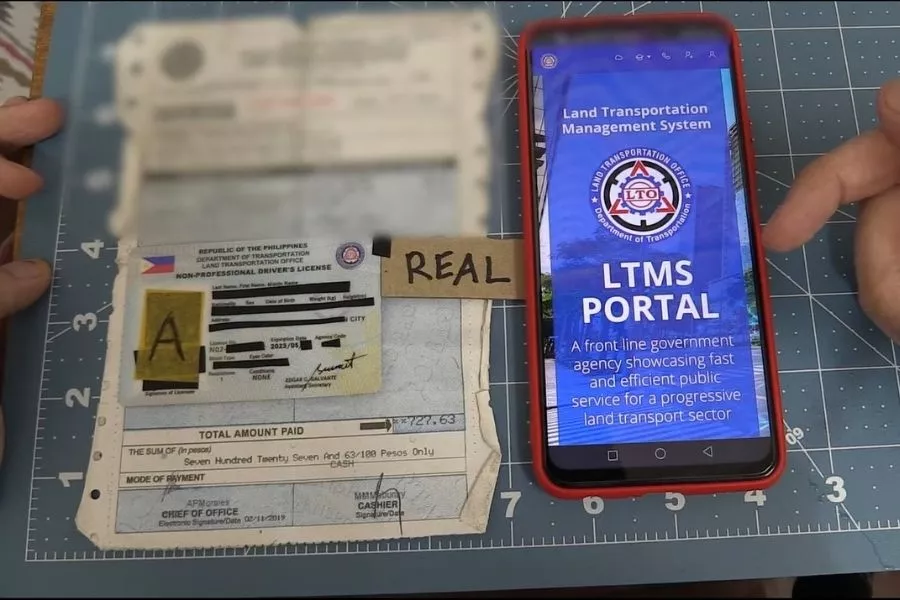
You can also authenticate licenses using the LTO's LTMS portal
These should correspond with each other for the page to prompt the user to proceed with registering the account. But if the license details and receipt number do not match, the card is fake.
Don't get caught
It goes without saying that having a fake driver’s license is bad, whether acquired through a fixer on-site or through a bogus Facebook page. Under Republic Act 4136 The offense carries a fine of up to Php 3,000 and six months imprisonment, along with a year’s suspension of driving privileges.
There’s nothing fake or bogus about our stories here at Philkotse.com.
Recent posts
- lto warns against fake page Jun 07, 2021
- Fake Drivers License Philippines Nov 26, 2020
- 10-year license needs clean record Aug 24, 2020












